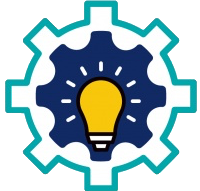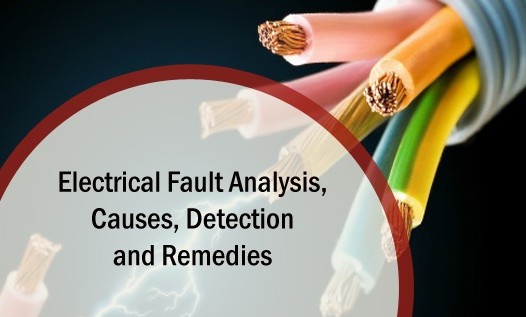Electrical Faults Causes, Analysis, Detection and Remedies in power systems
Details :
The course is concerned with the
calculation of fault currents in practical electrical power systems.
Short-circuit currents are associated with large amounts of very destructive
energy and therefore calculations must be made to ensure that the short-circuit
ratings of equipment are adequate to cater for these high currents. In
addition, an accurate assessment of these currents is also essential for
determining the settings of the system protection devices.
The methods of analysis, used
throughout industry, are thoroughly explained in this course. A powerful
engineering software package that makes complex and repetitive calculations
easy to follow and document is used throughout the course to ensure that
attention to detail is not compromised and minimum simplifications are made. A
considerable portion of the course is devoted to the application of these
methods to practical systems, starting from the preparation of the system for
analysis through the calculation process, by manual calculation and by the use
of computer analysis to the point of application of the results.
At the end of the course, each delegate will:
- Learn
how to collect in a structured way data and information needed for a power
system prior to fault analysis.
- Be
exposed to the analytical techniques to study a power system under various
types of faults.
- Understand
faults, their effect and different types of calculations involved with
short, medium and long time of these phenomena affecting the power system
- Be
able to assess the design and functionality of protective equipment.
- Become
familiar with the latest software based approaches to deal with complicated
commercial and industrial power systems and their analysis under fault
conditions.
- Maintenance supervisors
- Plant engineers
- Electricians
- Plant mechanics
- Service technicians
- Contractors
- Energy auditors
- Layout professionals
Introduction to fault analysis
- Introductions
- Goals
- discussion
- Source
of fault current
- Fault
statistics
- Basic
assumptions
- Short-circuit
rating of equipment
- Selecting
the correct switchgear rating for fault duties
- Overview
of per-unit system
- One-line
diagrams
- Sources
of impedance data for all items of plant
- Tutorial
to demonstrate preparation of a system for study
- Introduction
to the engineering software used throughout the course to make complex and
repetitive calculations as accurate as possible
- Closing
discussion
Three-phase short-circuit currents
- Review
– summary - discussion
- Manual
calculation of three-phase short-circuit current
- Circuit
reduction techniques
- Industrial
systems
- Electricity
supply systems
- Tutorial
- based on attendees plant
- Cables
subjected to short-circuit currents
- Compliance
with regulations
- Closing
discussion
Unsymmetrical fault conditions
- Review
– summary - discussion
- Overview
of symmetrical components
- Consideration
of various fault types
- Sequence
networks
- Consideration
of phase shift in two-winding transformers
- Consideration
of earth impedance
- Consideration
of three-winding transformers
- Closing
discussion
Representation of unsymmetrical faults in power systems
- Review
– summary - discussion
- Fault
diagrams
- Interconnected
sequence networks
- Special
considerations with reference to limitation of earth fault current
- Demonstration
examples based on industrial power systems
- Closing
discussion
Computer based calculation of faults
- Review
– summary - discussion
- Introduction
to a scaled down industrial programme capable to model complex power
systems under fault conditions
- Use of
the software program in practical studies (checking manual calculations)
- Industrial
standards
- Case
studies of faults in a high voltage network
- Case
study of faults in a low voltage network
• All
lectures are in colorful presentation
• All
lectures are interspersed with interactive discussion
• All
lectures include group discussion, case history and exercises
• Actual
major incidents as well as industry experience are reviewed
• Participants
receive a multicolor course manual
• Pictures
of real incidents and case history are shown
• Videos
on the subject are shown
09:00 to 15:00 including lunch and coffee breaks


